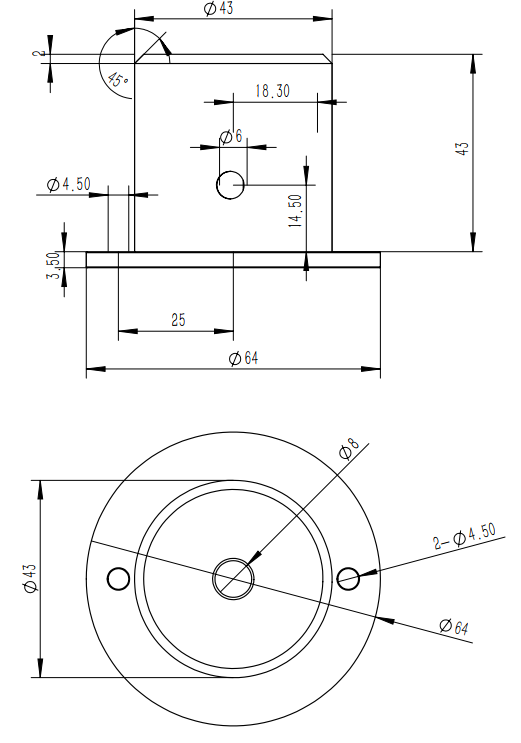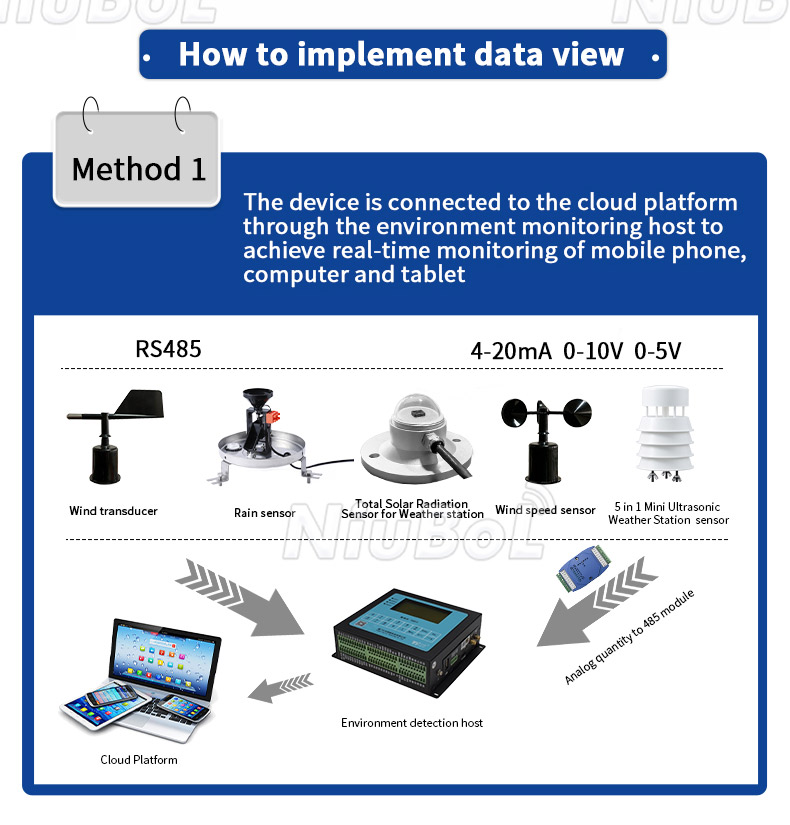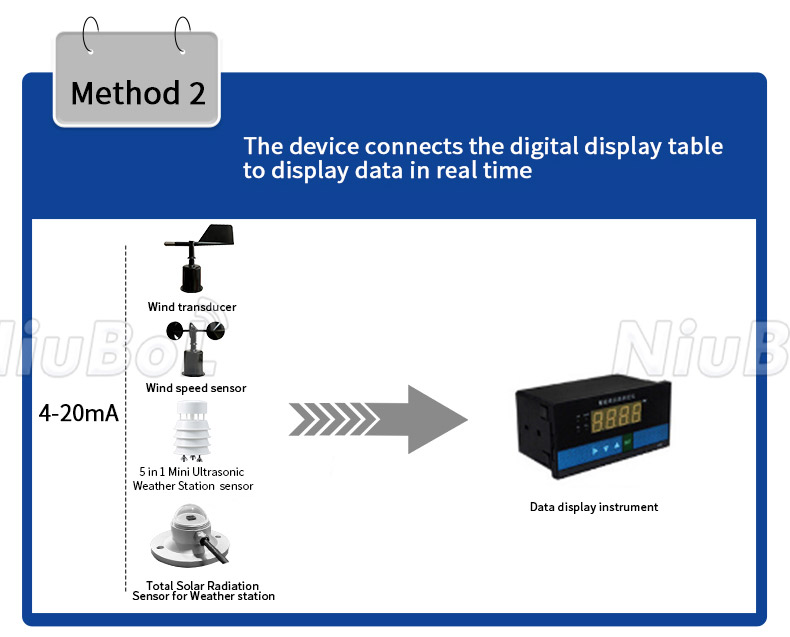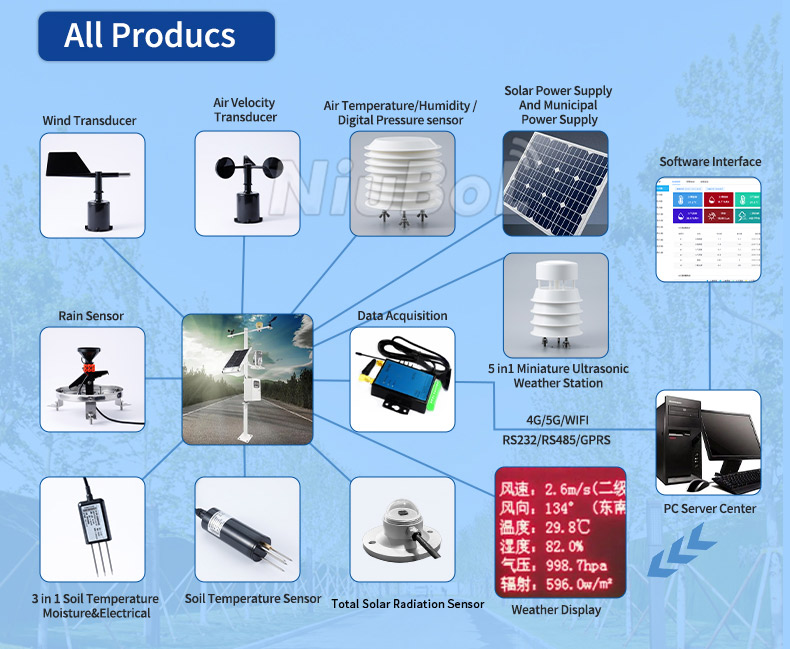

— Products —
 Consumer hotline +8618073152920
Consumer hotline +8618073152920 WhatsApp:+8615367865107
Address:Room 102, District D, Houhu Industrial Park, Yuelu District, Changsha City, Hunan Province, China
All products
PAR (Photosynthetically Active Radiation) light sensor is a type of sensor designed to measure the amount of light in the photosynthetic spectrum that is available for plants to undergo photosynthesis. The photosynthetic spectrum typically ranges from 400 to 700 nanometers (nm), which includes the wavelengths of light that plants can use to convert carbon dioxide and water into glucose and oxygen.
Tel/WhatsApp:+8615367865107
Email:Arvin@niubol.com +Nearly 100 partner company in more than 68 countries. We are committed to providing high-quality, practical products to meet your needs and help you solve problems.Product Details
A PAR (Photosynthetically Active Radiation) light sensor is a type of sensor designed to measure the amount of light in the photosynthetic spectrum that is available for plants to undergo photosynthesis. The photosynthetic spectrum typically ranges from 400 to 700 nanometers (nm), which includes the wavelengths of light that plants can use to convert carbon dioxide and water into glucose and oxygen.

Spectral range: | 400~700nm |
| Range: | 0-2000 W/m2 |
| Power supply: | DC 12V-24V |
Output: | 0~2.5V / 0~5V/ RS485 |
| Instrument cable length: | 2.5 meters |
| Response time: | Approx. 1s (99%) |
| Temperature correlation: | Maximum 0.05%/°C |
| Cosine correction: | up to 80° incidence angle |
| Operating temperature: | -40 to 65°C |
| Relative humidity: | 0 to 100%RH |
| Sensitivity: | 5 to 50µv/µmol-s¹ |
1. Photosynthesis Monitoring: By measuring PAR, researchers and growers can assess the amount of light energy available to plants for photosynthesis. This information is crucial for optimizing plant growth and productivity.
2. Light Quality and Quantity: PAR sensors can help determine the quality and quantity of light provided to plants, which is important for controlled environments like greenhouses and indoor farms. Adjusting light conditions can lead to better crop yields and healthier plants.
3. Phenotyping:PAR sensors can be used in plant phenotyping, which involves the measurement of various plant traits. Light sensor data can help researchers understand how different plant varieties respond to varying light conditions, which is valuable for breeding programs and understanding plant adaptation.
4. Energy Efficiency: In controlled environments, knowing the exact amount of PAR reaching the plants can help optimize the use of artificial lighting, saving energy and reducing costs.
5. Sustainable Agriculture: By understanding how plants use light, farmers can reduce waste and use energy more efficiently, contributing to more sustainable agricultural practices.
PAR sensors can be either photometric or radiometric. Photometric sensors measure the amount of light energy that reaches the sensor, while radiometric sensors measure the actual power of the light, taking into account the distance from the light source and the absorption properties of the atmosphere.




1. Measurement of Photosynthetically Active Radiation: PAR light sensors provide information about the amount of light available for photosynthesis, which is crucial for determining the optimal light levels for plant growth and development.
2. Quantum Flux Density (QFD): PAR light sensors measure the quantum flux density, which represents the number of photons per unit of time within the photosynthetically active radiation spectrum. The unit of measurement for QFD is typically micromoles per square meter per second (μmol/m²/s).
3. Plant Growth Optimization: PAR light sensors help growers and researchers optimize artificial lighting conditions in indoor gardens, greenhouses, and growth chambers. By measuring the light intensity, they enable users to adjust the lighting parameters to meet the specific needs of different plant species.
4. Light Distribution Analysis: PAR light sensors can be used to analyze the distribution of light within a growing area, providing insights into areas with inadequate or excessive light levels. This information helps growers achieve uniform light distribution and avoid shading or overexposure of plants.
5. Sensor Placement: For accurate measurements, PAR light sensors should be positioned at the plant canopy level or at the same height as the plants being monitored. This ensures that the sensor captures the actual light intensity that the plants are exposed to.
PAR light sensors are valuable tools for optimizing plant growth in controlled environments. By providing precise measurements of photosynthetically active radiation, growers can make informed decisions regarding lighting strategies, resulting in improved crop quality, increased yields, and more efficient use of resources.
These sensors can be standalone devices or integrated into more complex systems that also monitor other environmental factors such as temperature, humidity, and soil moisture. In modern agricultural settings, PAR sensors may be connected to a network and controlled by a central system that adjusts lighting conditions automatically based on the data collected. This smart agriculture approach helps to create optimal growing conditions for plants, maximizing yield and resource efficiency.
Sensors & Weather Stations Catalog
Agriculture Sensors and Weather Stations Catalog-NiuBoL.pdf
Weather Stations Catalog-NiuBoL.pdf
Related recommendations
 Multi-Depth Soil Sensor RS485
Multi-Depth Soil Sensor RS485 TDR Soil Moisture Sensor
TDR Soil Moisture Sensor Pyranometer Solar Radiation Sensors
Pyranometer Solar Radiation Sensors Soil ph sensor
Soil ph sensor Tipping Bucket Rain Gauge
Tipping Bucket Rain Gauge Air Temperature and Humidity Sensor
Air Temperature and Humidity Sensor
Screenshot, WhatsApp to identify the QR code
WhatsApp number:+8615367865107
(Click on WhatsApp to copy and add friends)
